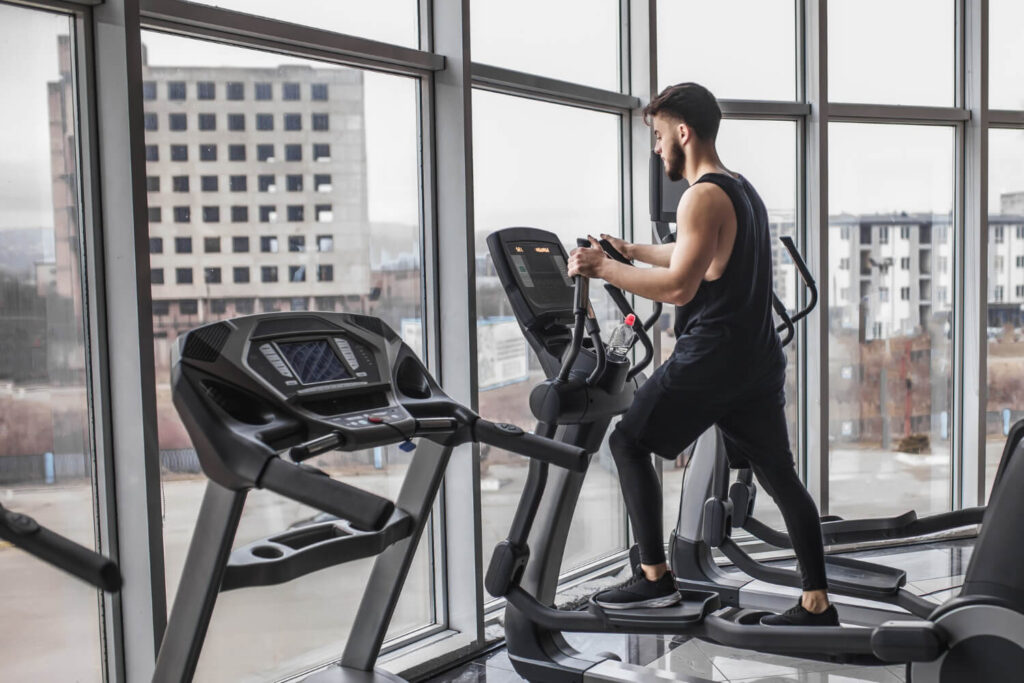A few years ago, I thought LinkedIn lead generation was all about volume. More connection requests, more messages, more posts. But after running campaigns for about 40 B2B companies over the past two years, I’ve realized the opposite is true. The brands that slow down, personalize, and build genuine authority on the platform end up generating not just more leads but better ones.
And 2025 is shaping up to reward that approach even more.
LinkedIn has tightened spam filters, limited mass outreach tools, and made organic engagement more valuable. So if you’re still using templates from 2021 or relying on automation software, it’s time to rethink your strategy.
Let’s get into what actually works right now.
Start With a Profile That Feels Human, Not Corporate
This one sounds obvious, but 80% of business profiles still look like glorified resumes. Job titles, vague “about” sections, and jargon like “results-driven professional with a passion for innovation.” Nobody connects with that.
Buyers scroll LinkedIn the same way they scroll any feed: quickly and emotionally. They decide in seconds if you’re credible and relatable.
We worked with a Perth-based SaaS company that rebuilt their founder’s profile in March 2024. Instead of “CEO at DataSync,” his headline became, “Helping manufacturing firms automate reports so they stop drowning in spreadsheets.” His About section told a story about how a missed shipment in 2018 inspired the product. In six weeks, his profile visits jumped 220%, and he booked 17 demo calls and all organic.
It’s not magic. It’s clarity.
If you wouldn’t introduce yourself that way at a conference, don’t write it on your LinkedIn. And please, skip the buzzwords. People buy from people, not acronyms.
If your business profile links to a weak or outdated website, that’s a credibility killer. Make sure your website development is on point before ramping up LinkedIn outreach. People check your site the minute they consider reaching out.
Stop Sending Cold Messages That Sound Like Bots
This might ruffle some feathers, but cold outreach on LinkedIn is mostly broken in 2025. Not because cold messaging itself doesn’t work but because 90% of messages sound identical.
“Hi [First Name], I noticed we share mutual interests in growth and innovation.” Delete.
Instead, treat connection requests like micro-conversations. When we helped a logistics software firm based in Brisbane refine their outreach last quarter, we made three changes:
Personalized the opener with a line about the recipient’s recent post or podcast appearance.
Removed every pitch line from the connection request.
Waited 48 hours before sending a friendly follow-up that offered a useful resource (a short guide, not a sales link).
Result? Their acceptance rate went from 28% to 64%, and they booked 23 calls in eight weeks. Not millions of impressions but actual conversations.
Honestly, I used to think automation tools were the future. But after watching two clients get their LinkedIn accounts restricted in Q4 2024, I’m convinced human-paced outreach is the only sustainable way forward. You can still use data tools to find the right people, but the messages themselves need to sound like they were written by someone who actually read the recipient’s profile.
Create Content That Proves You Know Your Stuff
This is where most B2B brands get timid. They share company updates, award announcements, and links to press releases. That kind of content gets engagement from your team and nobody else.
What works instead is teaching. Post the kind of insight your ideal buyer would normally pay a consultant for.
For example, one of our clients, a Melbourne-based IT support company, started posting short “tech myth” videos twice a week in early 2025. Topics like “Why 2FA Isn’t Enough Anymore” and “The $800 Mistake Most SMBs Make With Backups.” Each clip was under 90 seconds, shot on an iPhone, no fancy editing. Within 10 weeks, their follower count grew 38%, but more importantly, they got three inbound leads from CFOs at mid-sized firms in Victoria who said they’d been “lurking” on those posts for weeks.
And here’s something that surprised me: you don’t need to post daily. I used to preach consistency above all. But after testing, posting 2–3 strong, well-thought-out pieces per week outperformed daily posting by 40% in engagement rate. Quality really does beat volume.
Quick tangent: I once obsessed over trying to “hack” LinkedIn’s algorithm. Post timing, hashtags, comment strategies. None of it mattered as much as the depth of what you share. If people learn something new from your post, the algorithm takes care of itself.
Combine LinkedIn With Off-Platform Follow-Up
This is where most B2B lead generation efforts stall. You’ve connected, they’ve engaged with your post, maybe even liked your content but no actual meeting yet.
That’s where follow-up outside LinkedIn becomes crucial. When we integrated a simple retargeting layer for a Queensland-based construction software firm, we used two touchpoints:
A Google Ads remarketing campaign that showed their case studies to people who had visited their founder’s LinkedIn profile or clicked a shared post.
A short email sequence to new LinkedIn connections who had engaged with at least two posts (tracked manually, yes, it’s work).
In three months, that cross-channel setup brought in 19 qualified demo requests worth roughly $270K in pipeline.
You can’t rely on one platform alone. LinkedIn is great for connection and trust-building, but conversions usually happen through consistent off-platform touches. Retargeting, email, even a call if it fits your business model.
If you’re running ads or retargeting campaigns, check your Google Ads strategy to ensure your message stays consistent across platforms. Otherwise, you’ll just confuse prospects instead of converting them.
What’s Actually Working (and What’s Not)
If I had to sum up the 2025 reality of LinkedIn for B2B, it’s this: people crave genuine connection again. The automation wave came and went. The ones still trying to scale spam are fading out.
What’s working:
Profiles that sound human and specific.
Content that teaches or challenges assumptions.
Conversations that feel like conversations, not campaigns.
Integration with email or ads for nurturing.
What’s not:
Mass outreach software (LinkedIn’s AI detection is brutal now).
Empty engagement pods and copy-paste templates.
Vanity metrics like “views” without any lead intent tracking.
And one last confession: I used to dismiss LinkedIn Ads entirely. Too expensive, I thought. But after running a $5,000 campaign in July 2025 targeting operations managers in the construction sector, one client generated 12 discovery calls and closed two contracts worth $58,000. That’s not bad math. Turns out, when the targeting and message are right, even “costly” clicks pay for themselves.
The real advantage in 2025 isn’t being louder on LinkedIn. It’s being more intentional. Show up consistently, talk like a real person, and follow through beyond the platform. The rest will take care of itself.
Key Takeaways
- Specializing in a niche builds credibility and attracts the right clients.
- Sharing real results positions you as a trusted local SEO expert.
- Networking online and offline opens doors to new client opportunities.
- Flexible SEO packages make it easier for businesses to invest.
- Positive client reviews boost trust and encourage new inquiries.
Final Thoughts
LinkedIn in 2025 isn’t about chasing viral posts or automating outreach, it’s about real business relationships built one conversation at a time. I know that sounds cliché, but after managing more than 100 B2B campaigns across industries like SaaS, logistics, and manufacturing, I can say it’s the only consistent truth left on the platform.
What surprises me most is how many companies still underestimate the basics: clear positioning, authentic storytelling, and consistent follow-up. Those are the things that separate brands generating warm, high-value leads from those still chasing impressions.
If you treat LinkedIn as a long-term channel instead of a short-term sales tool, you’ll win. Your goal isn’t just to get people to click “Connect.” It’s to make them trust your insights enough that when they finally need help, your name is the first that comes to mind.
And honestly, that’s not something you can fake. You can’t template human connection. You can’t automate authority. You have to earn it through content that teaches, outreach that respects people’s time, and a presence that feels real.
So take a step back, review your profile, your posts, your messages. Ask: would you respond to you? If the answer’s no, fix that before worrying about any algorithm tweak or automation trick. The B2B leaders who master this human approach in 2025 are the ones who’ll dominate the next decade.
Common Questions
How often should B2B brands post on LinkedIn in 2025?
Two to three high-quality posts per week perform better than daily low-effort ones. Consistency matters, but clarity and usefulness matter more.
Do LinkedIn automation tools still work for lead generation?
Not reliably. Most trigger account warnings now. Personalized, slower outreach converts better and keeps your account safe.
What’s the best type of content for B2B engagement?
Educational insights, real case studies with numbers, or opinion posts that challenge industry norms tend to get the strongest engagement and lead quality.
How long does it take to see results from LinkedIn lead generation?
Usually 8-12 weeks. It depends on your niche, content quality, and follow-up process. Businesses that pair organic efforts with retargeting or email see faster traction.




